
Napoleon, subtitled "The Waterloo Campaign, 1815", is a strategic-level block wargame published by Gamma Two Games in 1974 that simulates the Battle of Waterloo. A number of versions of the game have been produced by Avalon Hill and Columbia Games.

The Arab-Israeli Wars, subtitled "Tank Battles in the Mideast 1956–73", is a board wargame published by Avalon Hill in 1977 that simulates various battles during the Suez Crisis, Six-Day War and Yom Kippur War.

Napoleon's Last Battles is a board wargame published by Simulations Publications in 1976 that simulates the last four battles fought by Napoleon. It was one of SPI's most popular games, and also received many positive reviews.

Wellington's Victory: Battle of Waterloo – 18 June 1815 is a board wargame simulation of the Battle of Waterloo, originally published by Simulations Publications, Inc. (SPI) in 1976.

Arcola, The Battle for Italy 1796 is a board wargame published by Operational Studies Group (OSG) in 1979 and republished by Avalon Hill in 1983 that is a simulation of the Battle of Arcola between French and Austrian forces in 1796. The game was designed to tempt players to purchase OSG's previously published and larger wargame Napoleon in Italy.
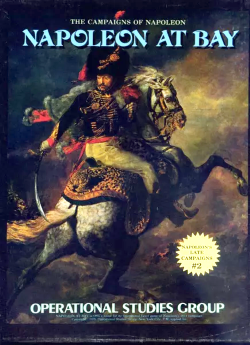
Napoleon at Bay, subtitled "Prelude to Waterloo: The Campaign in France, 1814", is a board wargame published by Tactical Studies Group/Operational Studies Group in 1978 that is a simulation of Napoleon's attempts to keep the Allies out of Paris in the early months of 1814.

La Grande Armée, subtitled "The Campaigns of Napoleon in Central Europe", is a board wargame published by Simulations Publications Inc. (SPI) in 1972 that simulates three campaigns of Napoleon.

Marengo: Napoleon in Italy, 14 June 1800 is a board wargame published by Simulations Publications Inc. (SPI) in 1975 as one of four games packaged together in the Napoleon at War "quadrigame". Marengo was also released as a separate game the same year. The game simulates the Battle of Marengo between Austrian and French forces.

Napoleon at War, subtitled "Four Battles", is a collection of four board wargames published by Simulations Publications Inc. (SPI) in 1975 that simulates various battles fought by Napoleon.

Napoleon at Waterloo is a board wargame published by Simulations Publications Inc. (SPI) in 1971 that simulates the Battle of Waterloo. The game, which features simple rules, was designed as an introduction to board wargaming, and was given as a free gift with each subscription to SPI's Strategy & Tactics magazine.
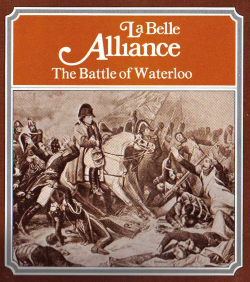
La Belle Alliance: The Battle of Waterloo is a board wargame published by Simulations Publications Inc. (SPI) in 1976 that simulates the Battle of Waterloo in 1815. It was one of four games that were published as part of the "quadrigame" titled Napoleon's Last Battles, but was also released as an individual "folio game", packaged in a shrinkwrapped cardboard folio.

Jena-Auerstadt: The Battle for Prussia is a board wargame published by Simulations Publications Inc. (SPI) in 1975 that simulates the twin battles of Jena and Auerstadt in October 1806. It was one of four games that were part of the "quadrigame" titled Napoleon at War, but it was also released as an individual "folio game" packaged in a shrinkwrapped cardstock folio. Jena-Auerstadt was rated highly in a 1976 poll of favorite wargames, but critics questioned whether its simplicity was capable of simulating a complicated two-part battle.
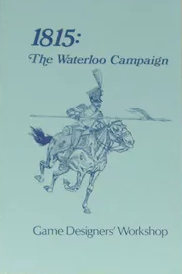
1815: The Waterloo Campaign is a board wargame published by Game Designers' Workshop (GDW) in 1975 that simulates the final three days of Napoleon's last campaign, culminating in the Battle of Waterloo. Reviewers characterized the game as not too complex, playable, fast-moving, and enjoyable. The game was found to be tilted in favor of the French, and GDW released a second edition in 1982 that addressed that issue.

Quatre Bras: Stalemate on the Brussels Road is a board wargame published by Simulations Publications Inc. (SPI) in 1976 that simulates the Battle of Quatre Bras, one of the engagements leading to the Battle of Waterloo. Quatre Bras was originally published as one of four games in the popular collection Napoleon's Last Battles, but was also released as an individual game.

Battles of the Hundred Days is a board wargame published by Operational Studies Group in 1979 that simulates the final Hundred Days of Napoleon's reign, culminating in the Battle of Waterloo. The game rights were purchased by Avalon Hill who retitled it Hundred Days Battles.

Ligny: Incomplete Victory is a board wargame published by Simulations Publications Inc. (SPI) in 1976 that simulates the Battle of Ligny. Ligny was originally published as one of four games in the popular collection Napoleon's Last Battles, but was also released as an individual game.
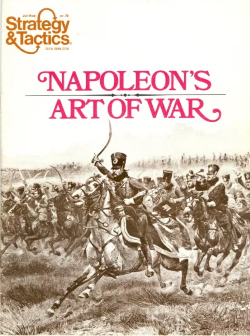
Napoleon's Art of War is a collection of two board wargames published in 1979 by Simulations Publications Inc. (SPI) that simulate Napoleonic battles.

The Thin Red Line, subtitled "A Game of the Battle of Waterloo" is a board wargame published by Yaquinto Publications in 1979 that simulates the Battle of Waterloo.

Ney vs. Wellington: The Battle of Quatre Bras is a board wargame published by Simulations Publications Inc. (SPI) in 1979 that simulates the Battle of Quatre Bras.
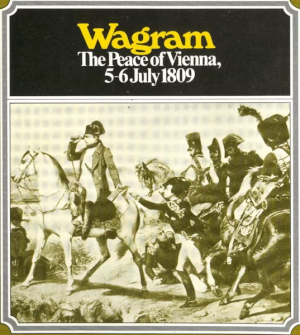
Wagram: The Peace of Vienna, 5–6 July 1809 is a board wargame published by Simulations Publications Inc. (SPI) in 1975 that simulates the Battle of Wagram in July 1809. It was one of four games that were part of the "quadrigame" titled Napoleon at War, but it was also released as an individual game with a set of metal miniatures. Wagram was rated highly in a 1976 poll of favorite wargames, and critics called it the best of the four games in the Napoleon at War box.




















